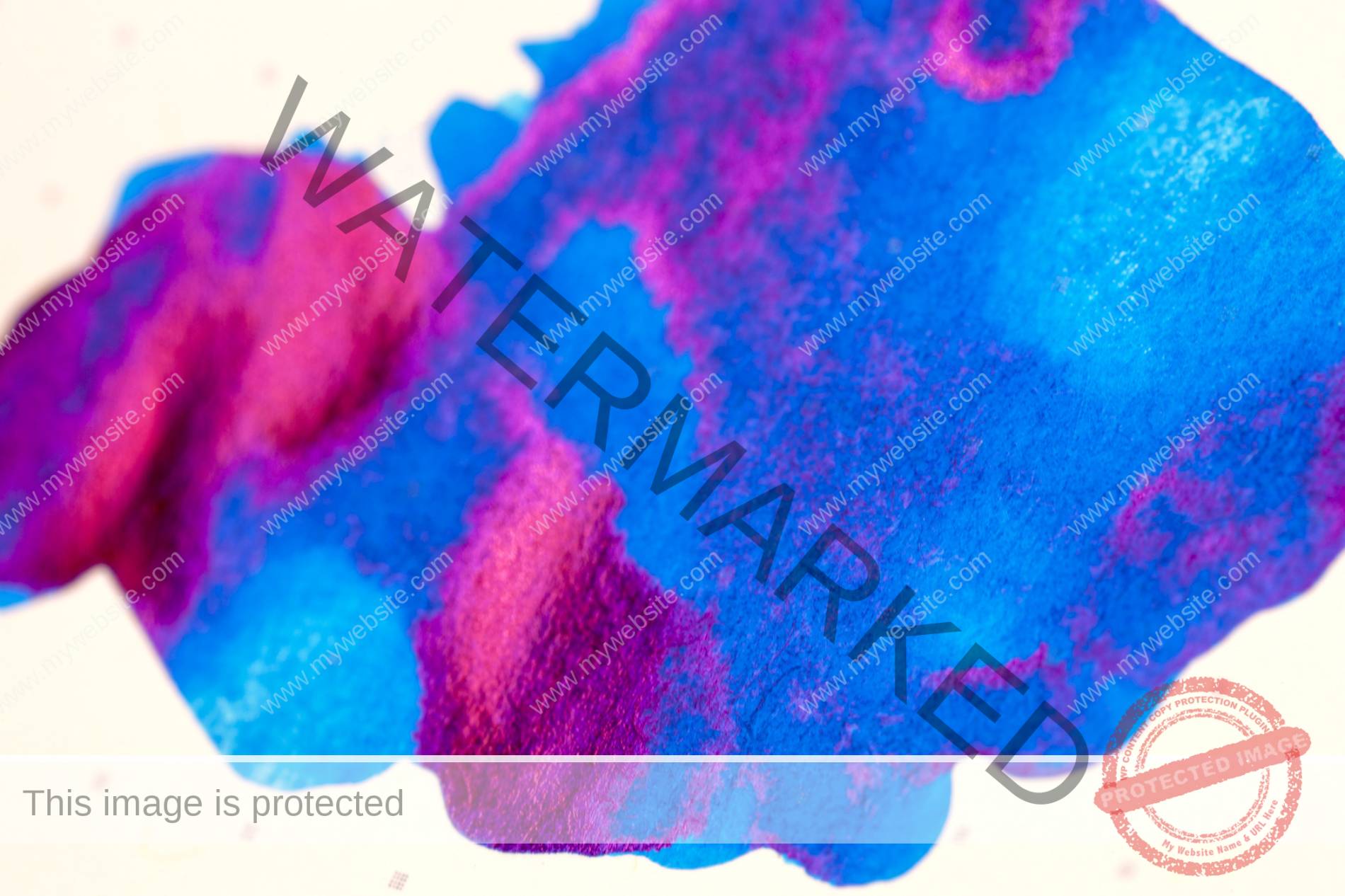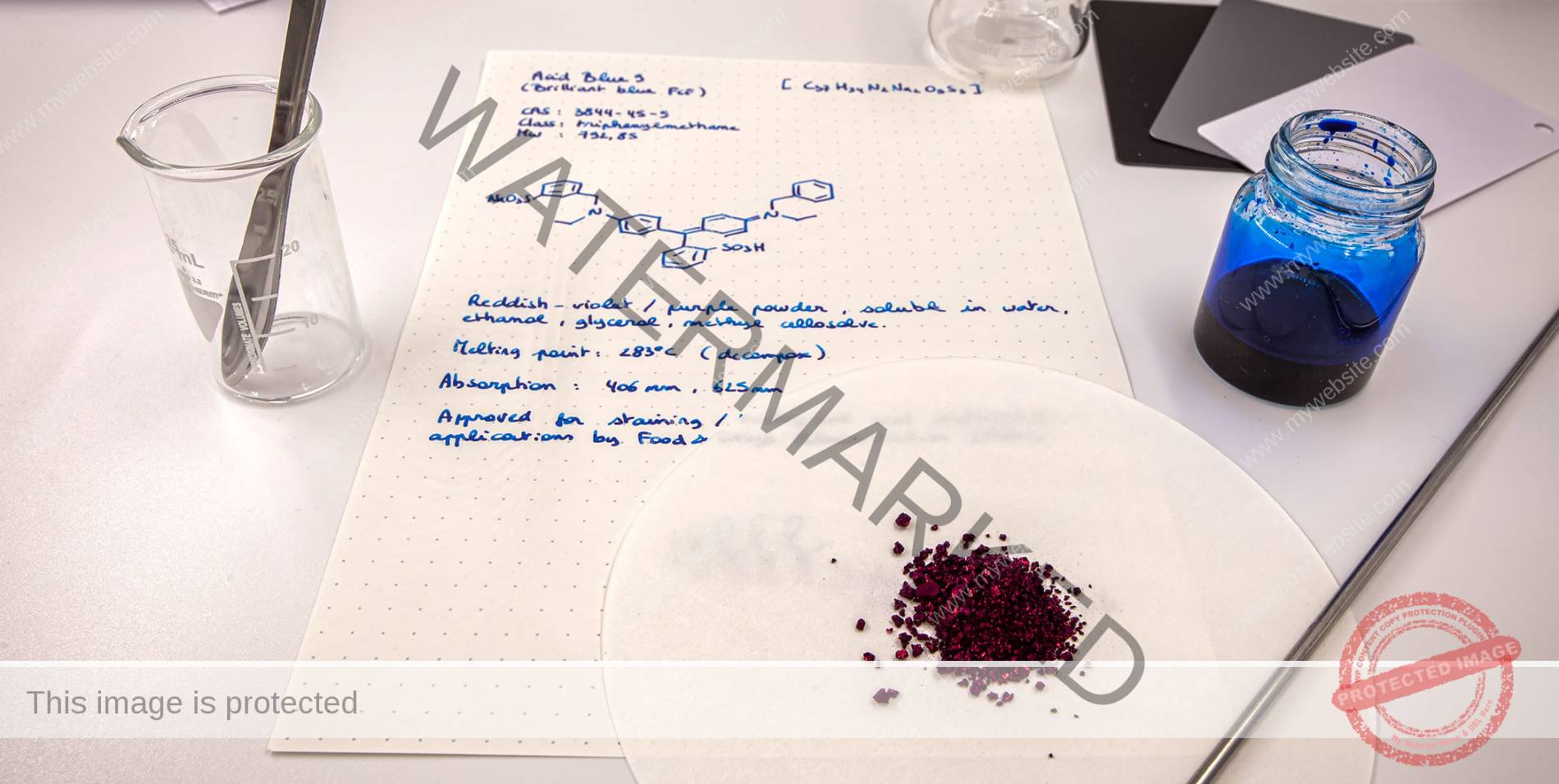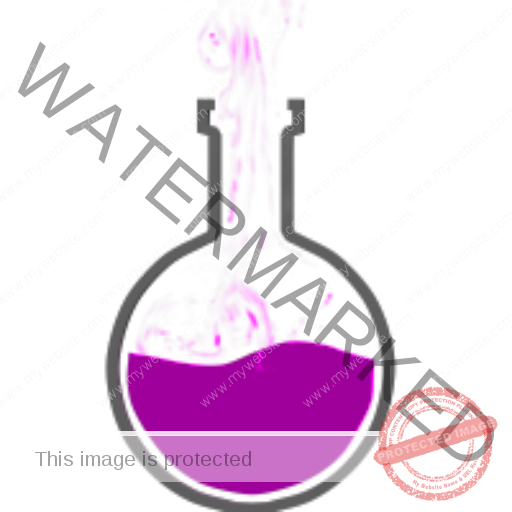
SCIENCE BLUE in the making!
This page describes the general composition of an ink and the several steps involved in the creation of SCIENCE Blue! The science behind the colour perception and the ingredients such as dyes, surface agents or preservative are discussed in a comprehensive way, explaining their function in the global formulation.

Formulation
Modern fountain pen ink is a liquid that is mostly made up of water and water-soluble dyes or pigments. The pigment is a solid substance dispersed in the water phase, forming a suspension. This article will focus on water-soluble dyes, maybe more on pigments later. Several additives such as wetting agents, surfactants, pH modifiers, rheology modifiers, fragrances and preservatives may be added to adjust the properties of the inks and optimise its behaviour in a fountain pen. Wetting agents and surfactants are used to increase the affinity of the ink for the paper and reduce the surface tension of water to an optimal level allowing smooth and easy flow of the ink through the feeder of the pen. The ink’s surface chemistry and the ink/paper interactions (wettability, spreading, absorption and adhesion) are important factors for the functionality and performance of a fountain pen.
